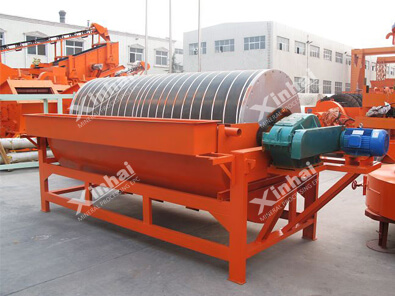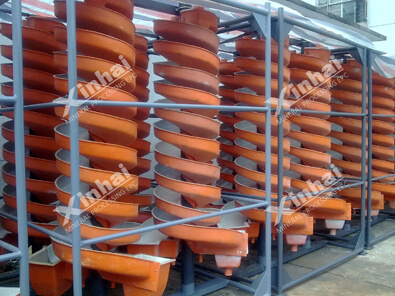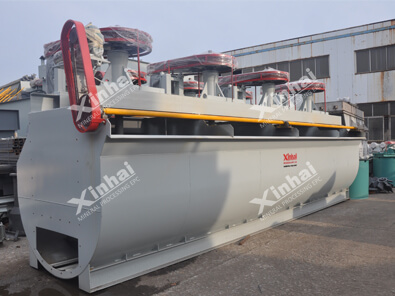How to Extract Tin from Cassiterite Ore?
 shirley
shirley
 Dec 15, 2023
Dec 15, 2023
 2672
2672
If you want to know more details about equipment, solutions, etc, please click the button below for free consultation, or leave your requirements!
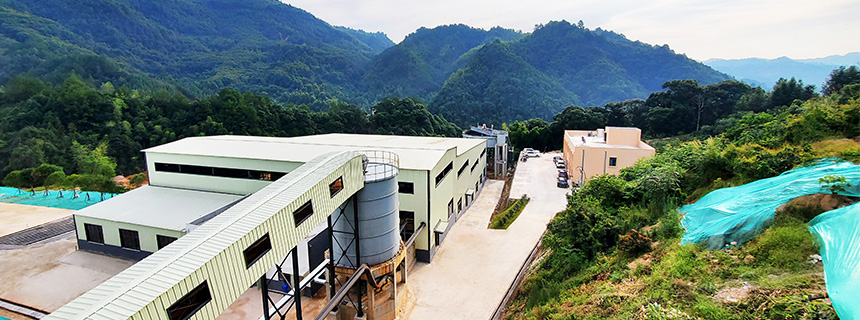
At present, more than 75% of the world's metallic tin resources come from cassiterite. Cassiterite ore has a high density, and its beneficiation method is mainly gravity separation, followed by auxiliary processes such as flotation, magnetic separation, electrostatic separation, roasting, and volatile leaching. Since the ore properties of different deposits are different, their mineral composition, crystallization form and embedding characteristics are also different, which also determines that their mineral processing methods and mineral processing equipment are also different. The following will introduce the tin ore beneficiation process and beneficiation equipment.
01Tin Ore Gravity Separation Process
BackCassiterite has a high density and a large density difference with gangue minerals, so gravity separation can be used to recover tin concentrate. This method has low processing cost and no pollution to the environment. Gravity separation is mainly suitable for coarse-grained tin ore. During pre-selection, the mineral processing plant generally adopts heavy media mineral processing process. Due to the brittle nature of tin ore, it is easily over-crushed during the grinding process. When coarse-grained and fine-grained cassiterite are mixed, fine-grained cassiterite is often lost. In order to ensure the effective recovery of cassiterite, this problem should be avoided. Selective grinding, staged grinding and separation are effective ways to solve this problem. Classification desliming is also one of the important links in cassiterite gravity separation. The selection particle size should be strictly controlled during processing to try to eliminate the influence of slime on the mineral processing effect.
Tin ore gravity separation equipment
Tin ore gravity separation equipment generally uses shakers and jigs, and ball mills and classifiers are required before gravity selection and pre-selection.
Tin ore shaking table: mainly suitable for processing tin ore with finer particle size. For tin ore with a low degree of monomer dissociation, it is difficult to obtain ideal grade and recovery rate using simple shaking table gravity separation. A multi-stage grinding-multistage gravity separation process needs to be used to improve its recovery rate.
Tin ore jig: suitable for sorting coarse mineral particles. For tin ore beneficiation, the lower limit particle size can reach 0.04mm under the premise that the specific gravity difference is ≥ 1.25 and the ore monomers are dissociated. It has good application effect in placer tin ores with high monomer dissociation degree.
Tin ore ball mill/rod mill: there are three types: grid ball mill, overflow ball mill and wet rod mill. Among them, the grid type is used for rough grinding in tin ores, and is generally used for one-stage grinding. It is often used with a spiral classifier to form a grinding and classification process. The overflow type is mainly used for fine grinding in tin ores, and is generally used for the second stage grinding. It is often combined with a cyclone to form a grinding and classification process. The rod mill can perform fine crushing and coarse grinding operations.
Classifier: There are two types: hydrocyclone and spiral classifier. The spiral classifier is used for coarse particle classification, and the hydrocyclone is used for fine particle classification.
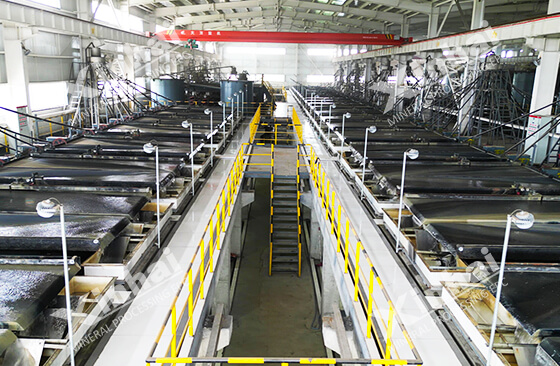
02Tin ore flotation Process
BackThe flotation process is mainly used to process fine-grained cassiterite. Since cassiterite is a brittle mineral, dissociation and its own cracks will lead to over-crushing and sludge during the grinding process. Therefore, the problem can be improved through pretreatment or the selection of effective flotation reagents and equipment.
In addition, flotation is carried out in liquid, and some ions in the liquid will have a greater impact on the collector. In particular, the presence of some metal cations has a greater impact on cassiterite flotation, and its properties and presence on the mineral surface will partially change. Therefore, during flotation, it is necessary to pay attention to the impact of ions on cassiterite flotation.
Cassiterite ore flotation equipment
Tin ore flotation equipment is mainly determined based on the properties of tin ore, so the equipment required mainly includes tin ore pre-selection equipment, flotation equipment and flotation reagents.
Tin ore pre-selection equipment: Common pre-treatment methods include intensive stirring of slurry, large-diameter hydrocyclone classification, small-diameter hydrocyclone desliming, reducing the lower limit of classification particle size and the lower limit of desliming particle size. The equipment required is mainly a stirring tank and a hydrocyclone.
Tin ore flotation equipment: Tin ore flotation and mineral processing equipment mainly includes two types: mechanical agitation flotation machine and inflatable agitation flotation machine. Among them, the mechanical agitation type mainly includes SF type, JJF type and BF type. The inflatable mixing type mainly includes KYF type, XCF type, GF type and CLF coarse grain type.
Tin ore flotation reagents: Common tin ore flotation reagents are mainly collectors and regulators. Among them, collectors include fatty acids, alkyl hydroxamic acids, phosphonic acids, alkyl sulfosuccinic acids, spleen acids, etc. Adjusters are divided into activators (sulfuric acid, copper sulfate, sodium sulfate, hydrochloric acid, soda), inhibitors (water glass, lime, sodium hexametaphosphate) and pH adjusters (salicylic hydroxamic acid, hydroxamic acid, P 86, Pine alcohol oil) several types.
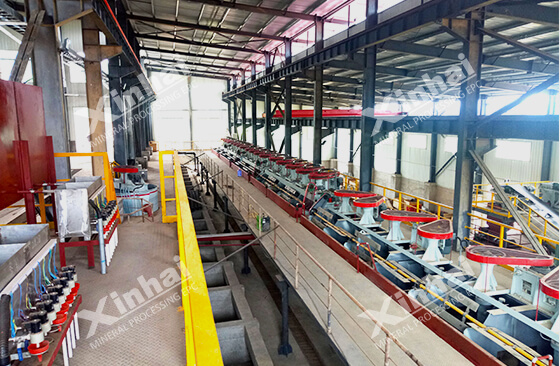
03Tin Ore Magnetic Separation Process
BackTin ores often contain symbiotic minerals such as iron oxide minerals and tungsten ores. This type of tin ore cannot be directly separated by gravity separation and flotation. Therefore, the iron-containing materials need to be separated from the tin ore through magnetic separation. , and then use other processes to complete tin ore separation. There are two methods of tin ore magnetic separation: wet high-intensity magnetic separation and dry magnetic separation. Wet high-intensity magnetic separation is used to remove iron from raw ores, sub-concentrates and concentrates before they enter the gravity separation operation; dry magnetic separation is used for tin ore. Separation of tungsten-containing ores in mines.
Tin ore magnetic separation equipment
Tin ore magnetic separation equipment mainly includes two types: wet strong magnetic separator and dry magnetic separator.
Tin ore wet magnetic separator: It has a large wrapping angle magnetic system, which can increase the length of the sorting belt and the number of magnetic flips, and achieve efficient separation of magnetic minerals and non-(weak) magnetic minerals.
Dry magnetic separator for tin ore: Since the densities of tin and tungsten are relatively large, the coarse-grained black and scheelite can be separated from cassiterite through a dry magnetic separator, and then the cassiterite and white tungsten can be separated by electric separation.
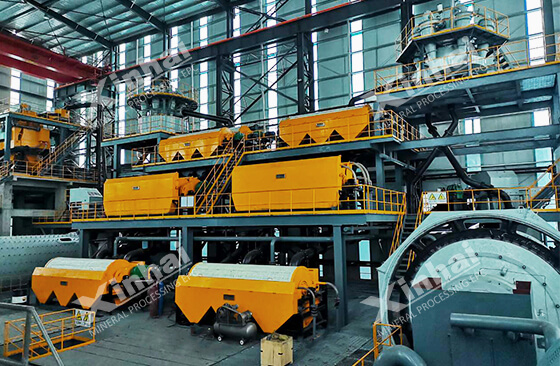
04Tin Ore Combined Beneficiation Process
BackSince the washed ore mined in recent years tends to be poor, fine, miscellaneous and multi-metallic, a single mineral processing technology can no longer meet the requirements. Therefore, the combined use of multiple mineral processing methods can show greater advantages. The joint beneficiation technology currently used is a variety of combined processes such as gravity separation, flotation, magnetic separation and electric separation. The specific method of joint selection depends on the properties of tin ore. The mineral processing equipment is the same as above.
05Tin Ore Chemical Beneficiation Process
BackDue to the continuous development of mining and mineral processing technology, most of the cassiterite veins have been mined and utilized. However, the utilization rate of low-grade and complex gangue veins is less. Chemical mineral processing can be used to process these ores. Currently commonly used chemical beneficiation methods include: sulfide roasting, chloride roasting and roasting-leaching.
When the oxides of iron and tin in the tin ore are closely symbiotic, the chlorination roasting method can be used. The low-grade tin ore is first mixed with carbon powder and calcium oxide to form particles, and then roasted. The generated stannous chloride is then The refractory can is absorbed by a special absorbent and converted into metallic tin. Depending on the grade and characteristics of the ore, different chemical beneficiation methods can be selected.
06To Wrap Up
BackThe above are the common tin ore beneficiation processes and the types of beneficiation equipment required for tin ore. In an actual mineral processing plant, how to choose tin ore beneficiation technology and equipment depends on the properties of the ore. Therefore, it is recommended to conduct a tin ore beneficiation test first, and design a suitable process plan and a complete set of tin ore beneficiation equipment through test analysis.
 +86 183 3575 8886
+86 183 3575 8886 pinklaurabao@gmail.com
pinklaurabao@gmail.com




 Message
Message Chat Now
Chat Now


